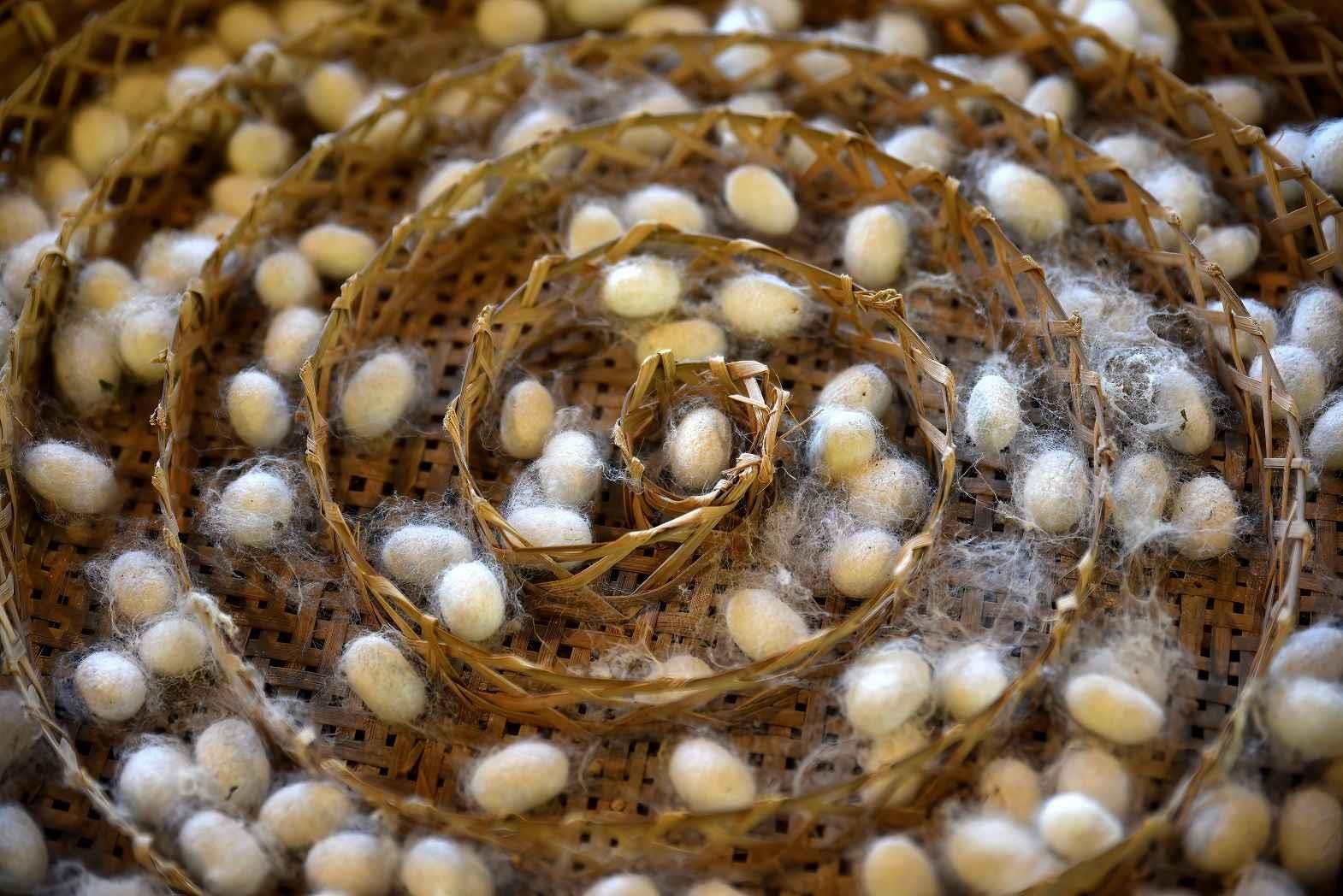Soft, lustrous, and incredibly strong Silk has along and glorious history. Two thousand year old Chinese secret, sericulture demands close and constant attention. Silkworms are cultivated for their cocoons which are harvested, processed and spun into yarn. They are very delicate, and while breeding them, much care has to be taken to keep them away from strong odors,noise etc. Silkworms take 3 to 4 days to spin a cocoon around themselves and look like fluffy white balls. To obtain high quality silk, much care has to betaken in their diet.
Generally raw silk is of an off-white; creamy color. The silk thread thus obtained is dyed with desired color dyes to obtain beautiful shades. This process of dyeing is much water intensive, and also results in discharging hazardous chemicals into the environment. Researchers have come up with a process wherein by adding a chemical dye to the diet of the silkworms, cocoons are produced in bright; luminous hues. The process is expected to eliminate the requirements of conservative dyeing such as huge volumes of water. It would to result in restricting water and environmental pollution. Customizing the diet of silkworms would not only improve colors, but also abolish environmental pollution and add medicinal properties to the threads produced as such.
Silkworms are the larvae of silk moth Bombyx mori. They consume huge amount of mulberry leaves, shed their skin five times, and grow around 3 inches long. Then, with the help of protein present in them, they spin a cocoon around them. The cocoon is collected and refined to produce fine silk threads. The threads thus made are usually cream colored.
Research was conducted to add rhodamine chemical dyes to the worms. The diet was fed on the third day of the last phase of the silkworms larva stage. This period is just before the larvae starts spinning their cocoons. After a few hours, the silkworms changed their color, and the threads produced by the silkworms also reflect the same color. Hues of deep yellow, gold, green, pink, etc can be produced as such.
Researches were earlier conducted expecting similar output proved futile as the dyes used had inappropriate molecular structure. The silkworms fed with dyes did not produce threads in various colors. Other experiments resulted in getting colored cocoons, but their pigments mostly were in the outer layer of the sericin. This is hydrophilic in the outer layer of the cocoon. As soon as the cocoon was immersed in water, these colors were easily dissolved.
With the current process, dye molecules are being incorporated in the silk gland of the worm while the silk molecules are being synthesized. This results in a strong interaction at a molecular level. As the dye molecules are incorporated in the silk filaments, the resulting luminescent hues remain permanent. Apart from the color, there are no other variations between the dye fed silk worm and the threads produced by silkworms fed with unmodified diet. This process minimizes water consumption, and other chemicals associated with conservative dyeing processes.
Research is also being conducted to explore the possibilities of feeding the silkworm with other diets so as to obtain threads with anti-inflammatory and antibacterial properties. Proved successful this technique sees wide applications in the field of technical textiles.
The new method is considered environmentally friendly, and allows colors to be naturally incorporated with the threads, thus doing away with the toxic process of dyeing.
References:
- Ecouterre.com
- Treehugger.com
- Silk-road.com








Comments